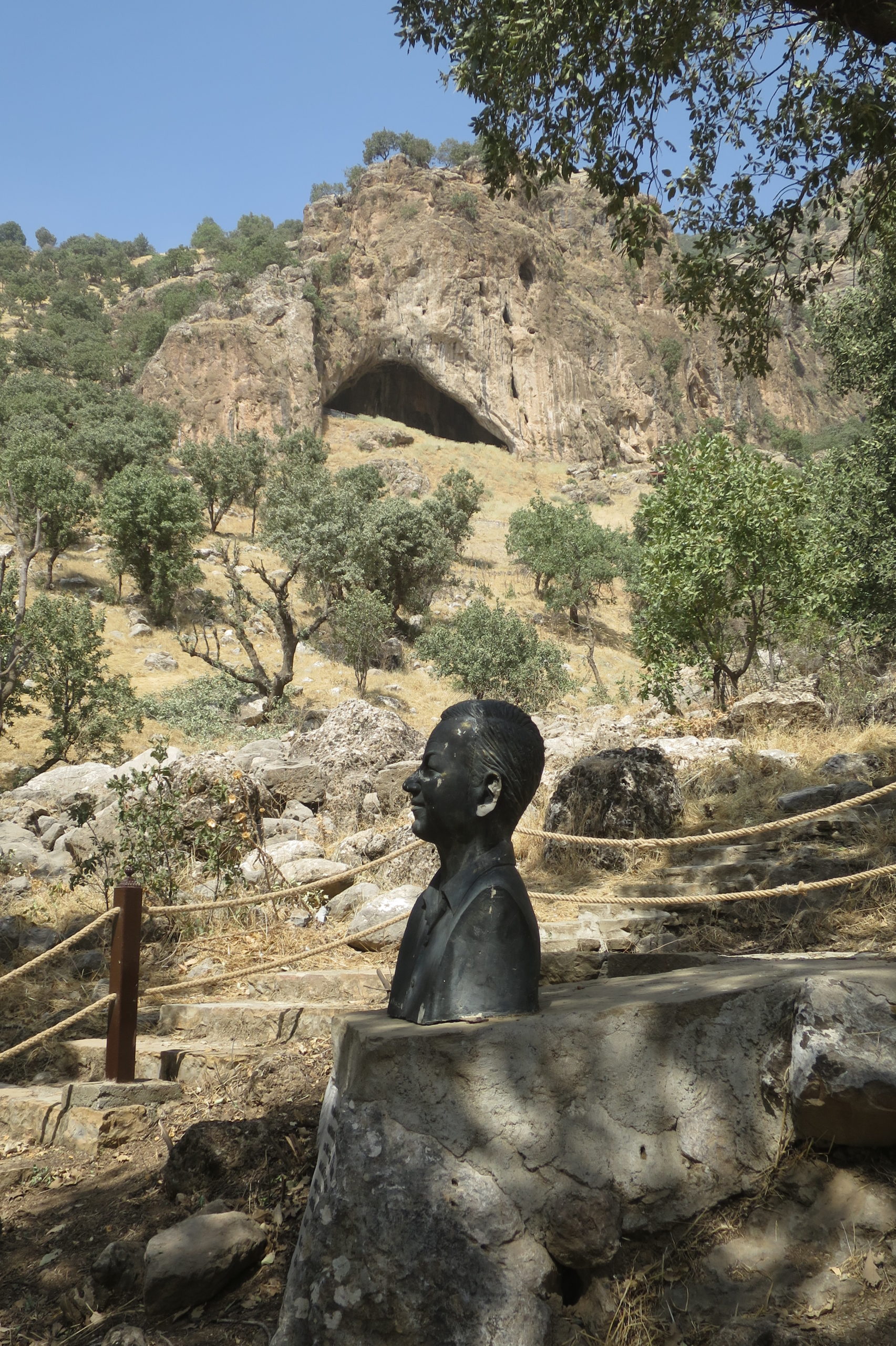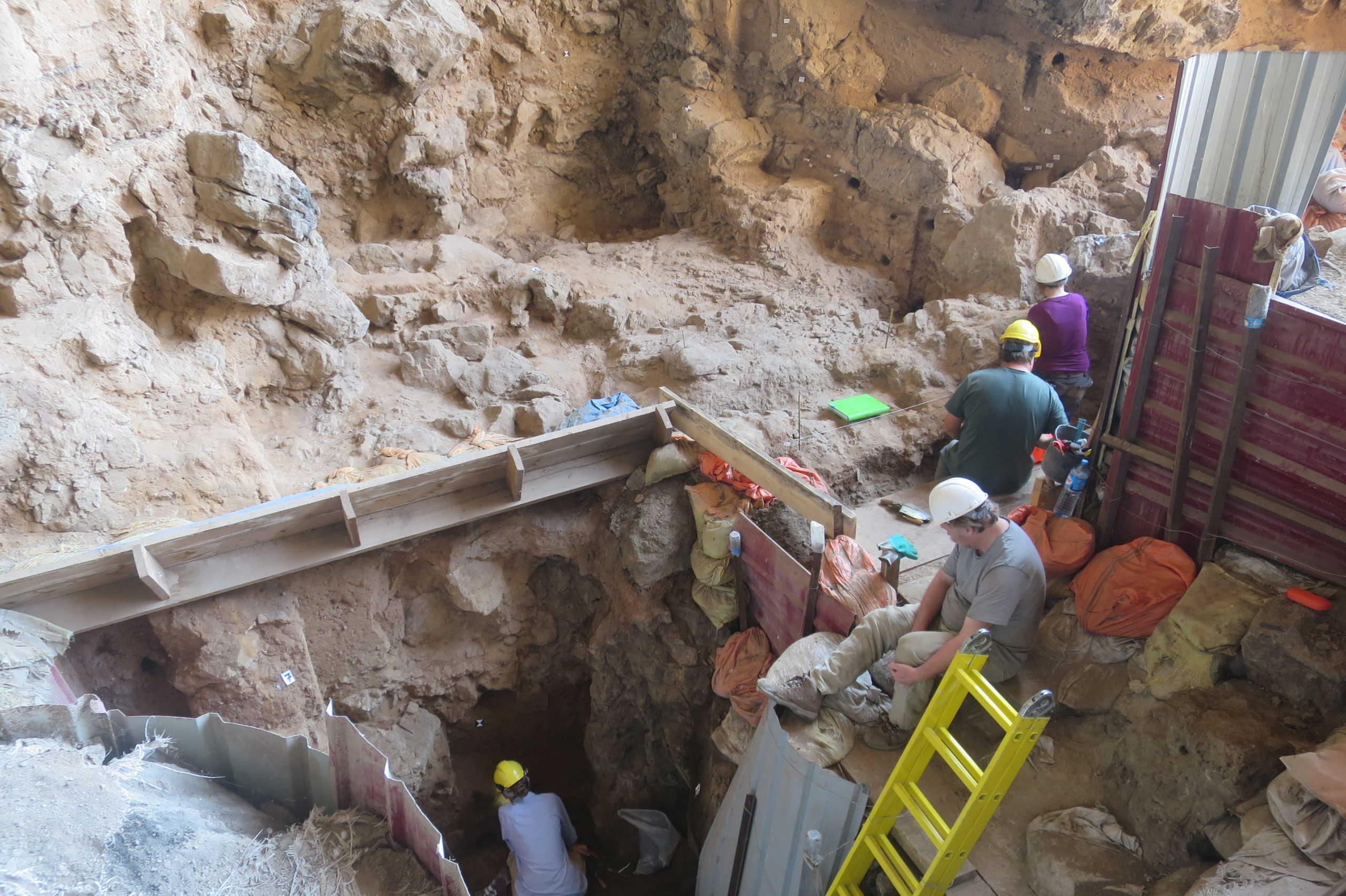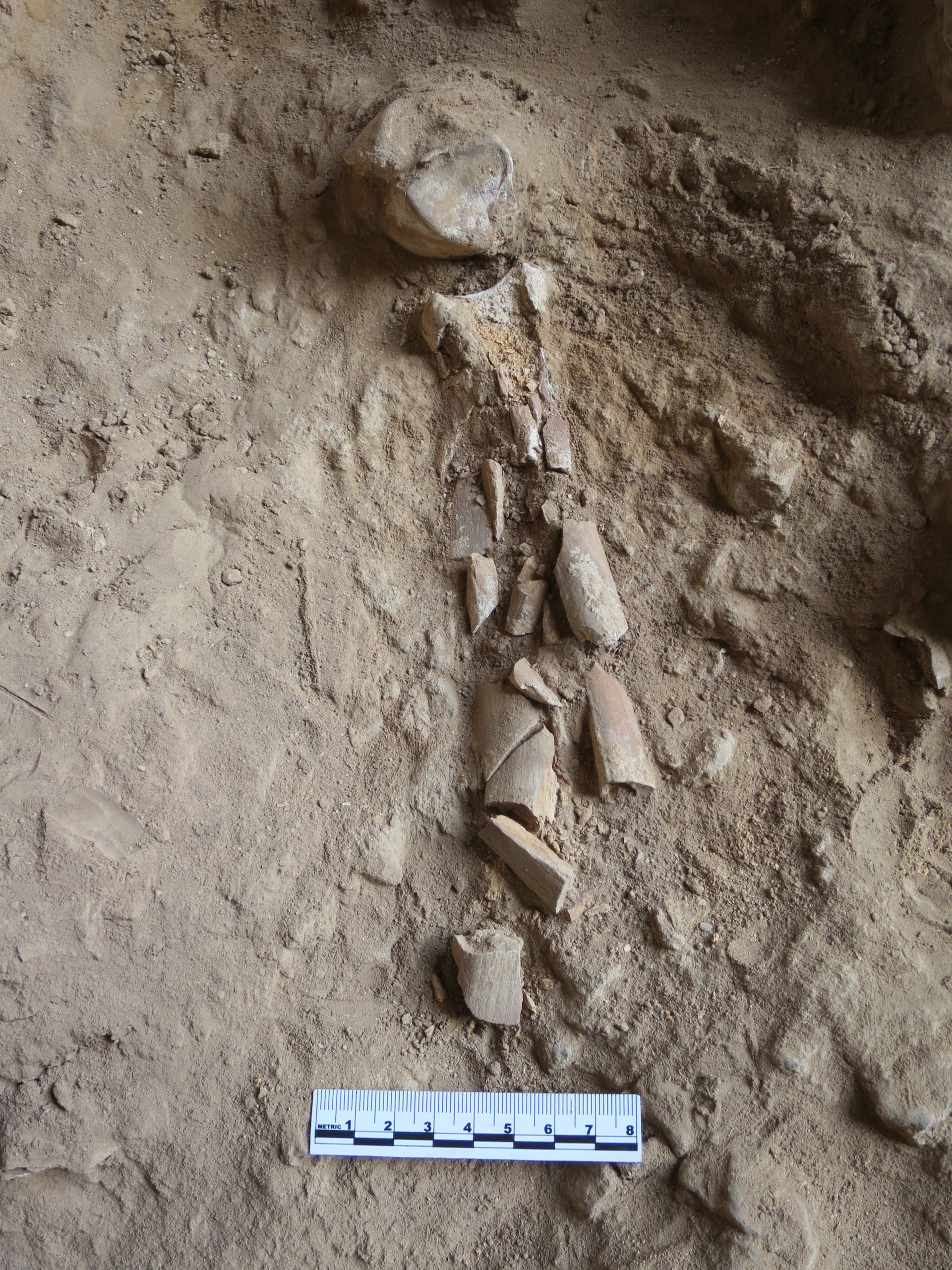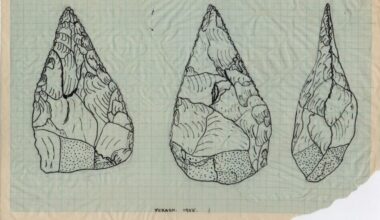
By Graeme Barker, Disney Professor of Archaeology Emeritus at the University of Cambridge and CBRL trustee.
Ancient DNA has shown that most of us living outside Africa have a few per cent of Neanderthal DNA in our make-up, meaning that at some time in the past our ancestors – Homo sapiens – interbred with Neanderthals. So, when and where did Neanderthals and Modern Humans, the term archaeologists use for early members of Homo sapiens, meet up?
We have our roots in Africa around 300,000 years ago, and Neanderthals had their roots in Europe and Central Asia around 400,000 years ago. Bones of both have been found in caves in Israel dating to around 120,000 years ago, at a time when the world’s climate was not so different from today’s. Climate was a key factor that allowed Neanderthals to spread southwards from Europe and Central Asia and some Modern Humans to disperse northwards and eastwards out of Africa. So Modern Humans and Neanderthals most likely encountered each other in the Middle East between 120,000 and 40,000 years ago, until Neanderthals became extinct.
One of the key sites in southwest Asia where investigating Neanderthals – Modern Humans’ encounters and the role of Modern Humans in the demise of Neanderthals is the Shanidar Cave in Iraqi Kurdistan (Figure 1), excavated for the first time in the 1950s by American archaeologist Ralph Solecki (Solecki, 1972).
For the past five years I have been directing a team re-excavating Shanidar Cave (Figure 2). My main goal was to use modern methods of archaeological science to work out the chronology of Neanderthal and Modern Humans use of the cave and the climatic conditions in which they had lived, as one of the main theories about Neanderthal extinction is that they could not cope with massive climate change as well as Modern Humans were able to.

Excavating in remote Iraqi Kurdistan in the 1950s was a remarkable feat of determination – something that Ralph Solecki had in spades having somehow survived being blown up by an anti-personnel mine as a US marine in World War II. He enrolled and trained a large group of local workmen and over five fieldwork seasons dug a 14 metre-trench in the centre of the cave floor, sometimes using dynamite (kindly supplied by the Iraqi military!) to deal with bus-sized boulders.
In the upper half of the trench he found stone tools of the “Baradostian” culture, which he named after the local Baradost mountains. Although Solecki did not find human bones in this section of the trench, he suggested that the Baradostian culture was made by Modern Humans in Europe and the Middle East and he associated it with the Aurignacian culture.
In the lower half of the trench he found the skeletal remains of 10 Neanderthals – men, women, and children – the largest group found at any site before or since. He thought that several had been killed by rocks falling from the cave roof, but soil samples taken near one of them (Shanidar no. 4) produced grains of fossil pollen of flowers that nowadays grow round the cave in the spring. He concluded that this individual was buried with funerary rituals involving placing flowers with the body.
Another find that had a huge effect on ideas about Neanderthals being ‘savage brutes’ was of an individual who had received massive injuries that would have left him physically maimed and probably partly blind but who had died much later, so must have been looked after by his community.
When I started my excavations at Shanidar, I never thought we would have found more Neanderthals. But, in 2015 and 2016, we found articulated limb bones that the project’s biological anthropologist Emma Pomeroy, has shown were part of Solecki’s Shanidar no. 5. We dated the bones to around 50,000/55,000 years ago (Pomeroy et al., 2017) (Figure 3).

Recently we discovered and excavated the articulated remains (Figure 4) of the upper body of an adult Neanderthal buried close to where Solecki found the Flower Burial. These remains might be part of a group buried in the same part of the cave around 75,000 years ago. We called this find Shanidar Z and a team from Copenhagen is trying to extract ancient DNA from these bones (Pomeroy et al., 2020).

Like Solecki, we did not find any human bones in the Baradostian levels. But the Copenhagen team is looking for ancient DNA in soil samples from both the Baradostian and Neanderthal levels to try to establish when Modern Humans first arrived at Shanidar. We have found that people with Baradostian stone tools were visiting the cave before the Shanidar no. 5 body. Does this mean that Modern Humans were around at the same time as Neanderthals?
One of the Solecki Neanderthals had a healed wound in his rib from a thrown projectile. Some scholars have suggested that he must have been attacked by a Modern Human as they had sophisticated projectile weaponry: if this is the case, it would be additional evidence for the presence of both groups at Shanidar at the same time. But Neanderthals had throwing spears so he could have been wounded by another Neanderthal – or of course it could just have been a hunting accident.
In the coming field seasons, we will use modern techniques in archaeological science to understand if Neanderthals and Modern Humans encountered each other in and around Shanidar Cave, and if so, what happened when they did.
References:
Solecki, R. (1972) Shanidar: the First Flower People. New York, Alfred A. Knopf Inc.
Pomeroy, E., M.M. Lahr, F. Crivellaro, L. Farr, T.Reynolds, C.O. Hunt and G. Barker (2017) Newly-discovered Neanderthal remains from Shanidar Cave, Iraqi Kurdistan, and their attribution to Shanidar 5. Journal of Human Evolution 111, 102-118.
Pomeroy, E, P. Bennett, C. Hunt, T. Reynolds, L. Farr, M. Frouin, J. Holman, R. Lane, C. French, and G. Barker (2020) New Neanderthal remains associated with the ‘Flower Burial’ at Shanidar Cave, Iraqi Kurdistan. Antiquity 94 (373): 11-26.
Barker, G., D. Gilbertson, and D. Mattingly (eds.) (2007) Archaeology and Desertification: the Wadi Faynan Landscape Survey, Southern Jordan. Oxford: Oxbow; London: Council for British Research in the Levant, 510 pp. and accompanying CD.
Graeme Barker is Disney Professor of Archaeology Emeritus at the University of Cambridge. His research has focused on the relations between people and the environments they inhabit and shape. Before his current work in Iraq he led inter-disciplinary fieldwork projects in Italy, Libya, Jordan, and Sarawak. In Jordan he co-directed the Wadi Faynan Landscape Survey, a study of relations between farmers, shepherds and miners over the past 10,000 years. He is a Fellow of the British Academy and of the Royal Geographical Society, was appointed CBE for services to archaeology in the Queen’s New Years Honours 2015 and is a trustee of CBRL.
The views expressed by our authors on the CBRL blog are not necessarily endorsed by CBRL, but are commended as contributing to public debate.















